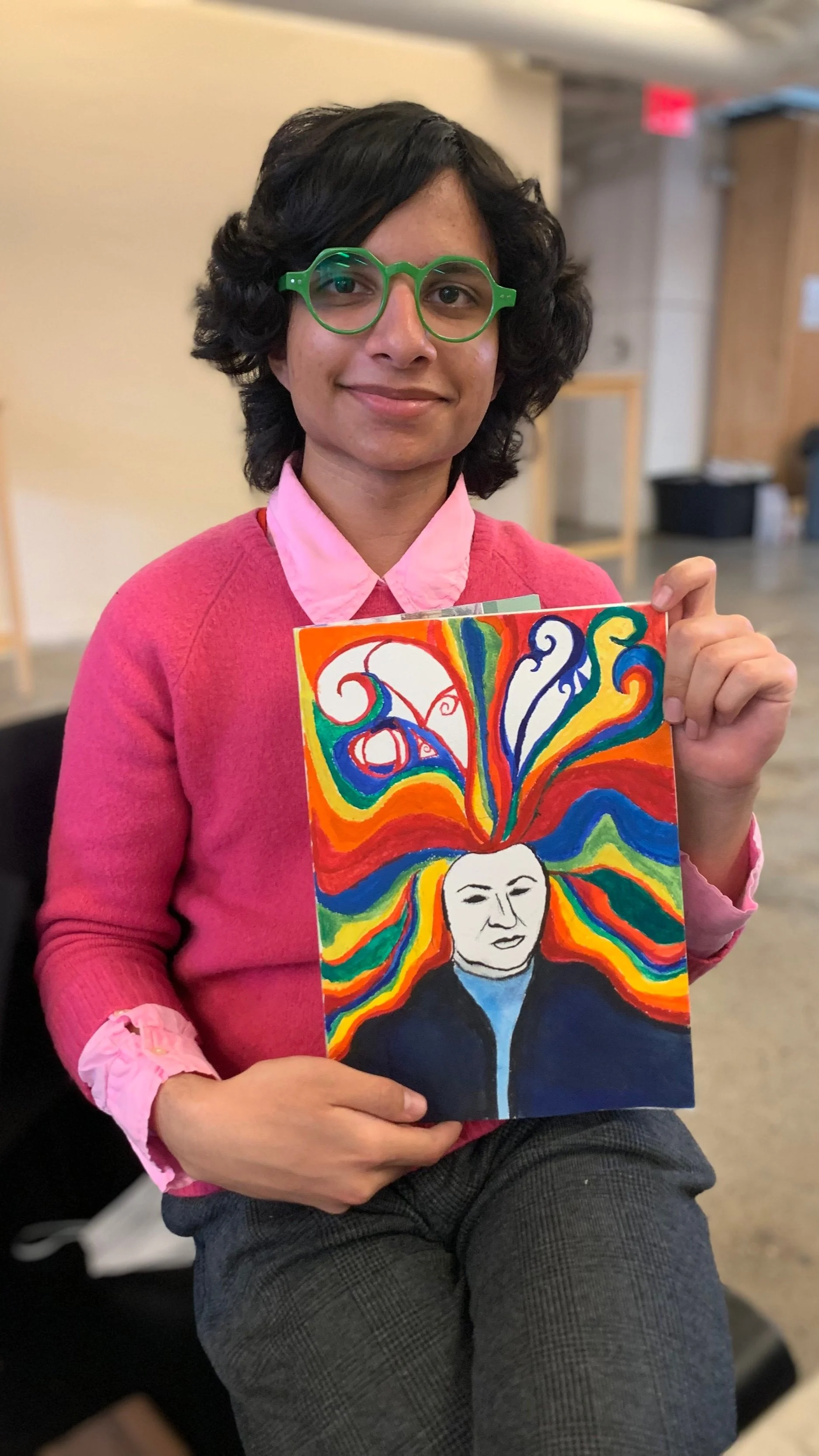ABOUT PH: YOUTH
Project: Humanity believes that the arts are a critical tool to respond to trauma, decrease isolation, and support social emotional wellbeing. Our work is backed by research and our impact reinforced by data.
Despite all the knowledge about the impact of arts programming on mental health and wellness, we are the only organization going directly into Toronto’s youth shelters offering consistent artistic opportunities.
Mentee Aemun shows off their new artwork from Monthly Hang
Project: Humanity uses high caliber artistic programming to support some of the most vulnerable youth in the Greater Toronto Area, making lasting positive impacts on individuals and communities. Working directly with the youth shelter system, our work has been transforming lives since 2007.
Our programs are based on the resilience model The Circle of Courage, which shows that youth need four elements for wholeness and wellness.
The four elements are:
Attachment - Knowing that they are loved
Achievement - Knowing that they are capable
Autonomy - Knowing that they have choice
Altruism - Knowing that they have worth
All too often youth-on-the-margins do not feel these things. Through meaningful connections with adults and opportunities for artistic expression and growth, our work restores these Circle of Courage needs. As one youth said:
“When you live in shelters you start believing you are lesser. It's very hard to fight the doubts and it clings on to you so the Mentorship has been reassuring me that I am capable and I am smart.”
Project: Humanity’s Shelter Youth Initiative consists of two programs: Drama Drop-In (DDI) and the PH 1:1 Arts Mentorship Program (1:1). Participation in either program also offers youth access to our Monthly Arts Hang. Through this initiative, Project: Humanity directly supports more than 100 youth-on-the-margins each year.
Mentee Joyce shows Mentor Debbie her fashion design portfolio.
Who We Work With
Every night in Toronto between 1,500-2,000 experience homelessness. Within that population, data shows that 63% have experienced childhood trauma and abuse and up to 85% have struggled with their mental health. Emergency services exist, but they do not get at the root cause of the issues.Shelters are under resourced and over capacity. They rightly prioritize food, shelter, and education but struggle to build systems that address trauma and marginalization effectively. They are not easily adaptable or lithe, resulting in a lack of diversity in their approaches to mental health and community building.
Why The Arts
People with high levels of trauma often struggle with traditional talk therapy because the impact is in their “deep brain”, an area that cannot be easily accessed while using language.
The arts, on the other hand, are a very effective way to express things from the deep brain. As the American Congress of Rehabilitation Medicine puts it “Art allows you to express feelings and memories in ways other than words...art can stimulate the creation of new neural pathways and ways of thinking.”
There are more and more research-based recommendations to address negative outcomes from childhood trauma that shows that the arts are powerful tools to disrupt cycles of trauma. This research is the premise for Project: Humanity’s work. Our programs are not auxiliary services but fundamental ones.
““In all my years of teaching and research, I have scarcely witnessed the level of engagement elicited by the sophisticated pedagogical work of a company like Project: Humanity.””
““This is a healing; a healing for people who maybe didn’t find place to have that elsewhere””
To date, PH has:
153 individual arts mentorships across 52 distinct disciplines with youth-on-the-margins
1614 mentorship weeks completed
10 community partners
$171.6k remunerated to artists working with youth
Over 1,500 youth supported through our in-shelter drama workshops


